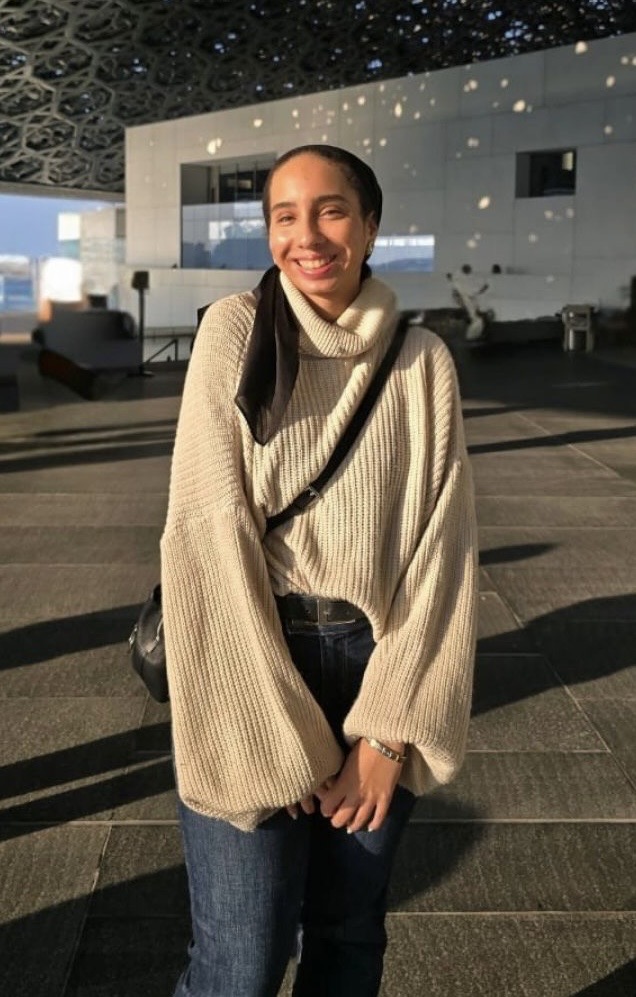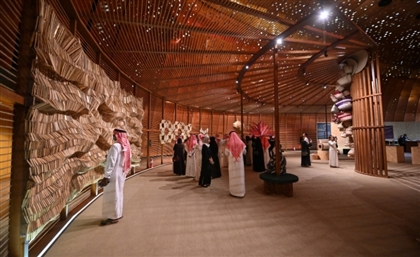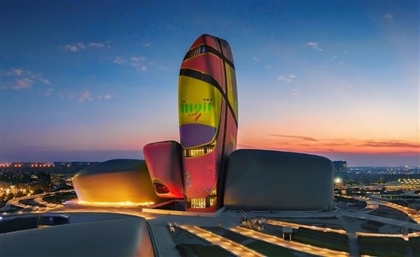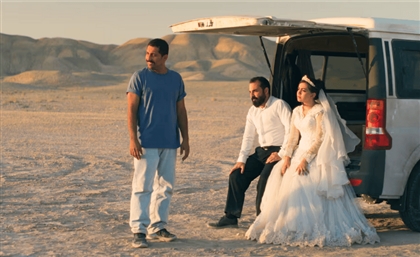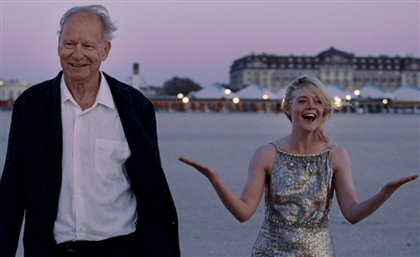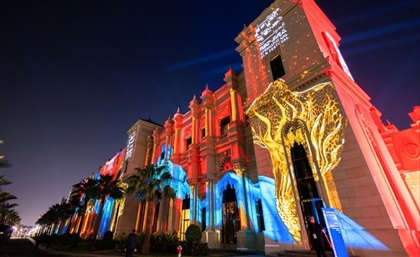Saudi’s Ithra Unveils Khoos Initiative Celebrating Palm Weaving
Ithra launches the Khoos Initiative, celebrating the creative and cultural legacy of palm weaving through art and design.
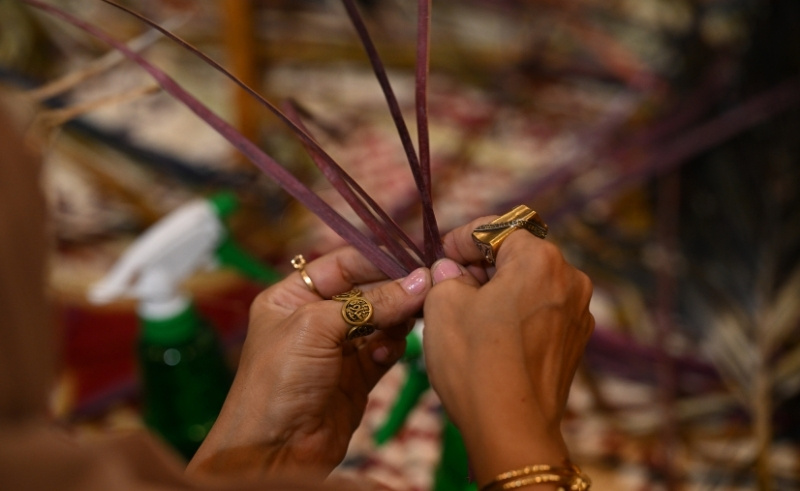
The King Abdulaziz Center for World Culture (Ithra) has launched the Khoos Initiative, a cultural project dedicated to reimagining the ancient craft of palm weaving. Connecting artisans and communities in Saudi Arabia’s Eastern Province with global creatives, the initiative seeks to bridge centuries of tradition with contemporary design practice.-0a14350d-c956-4315-824d-0a786e8d3e9c.jpg) At its core, palm weaving — or Khoos — is a deeply rooted form of making, where dried fronds are transformed into baskets, mats, and decorative objects. More than a craft, it represents the intergenerational continuity of Saudi culture, especially in Al-Ahsa Oasis, a UNESCO World Heritage Site where palm weaving remains part of everyday life.
At its core, palm weaving — or Khoos — is a deeply rooted form of making, where dried fronds are transformed into baskets, mats, and decorative objects. More than a craft, it represents the intergenerational continuity of Saudi culture, especially in Al-Ahsa Oasis, a UNESCO World Heritage Site where palm weaving remains part of everyday life.-5d48a804-008b-4898-b499-4ed14c24fafd.jpg)
“The impact we seek through the Khoos Initiative is to elevate this craft within the realm of contemporary practices, making it a source of innovation and a bridge that connects generations to the values of this heritage,” explains Ala’a Al-Qahtani, Khoos Initiative Lead at Ithra. “This vision is realised through diverse activities that begin with documenting the way of life of communities who have preserved the craft across generations, followed by residency programmes that provide fertile ground for experimentation, and culminating in exhibitions that invite the public to engage with the palm and its fronds as a living cultural symbol that continuously evolves.”-e4097ef9-4b8b-4324-9399-3777a4857c82.jpg) A central component of the initiative is the Khoos Residency, held between Al-Ahsa and Ithra from October 3rd to the 14th. Bringing together designers and artisans from Saudi Arabia and abroad, the residency became a site of dialogue and material experimentation. “By connecting artisans, artists, and designers across borders, we support traditional Saudi techniques while fostering sustainable and innovative approaches within the craft sector," Noura Alzamil, Ithra’s Head of Programmes, says.
A central component of the initiative is the Khoos Residency, held between Al-Ahsa and Ithra from October 3rd to the 14th. Bringing together designers and artisans from Saudi Arabia and abroad, the residency became a site of dialogue and material experimentation. “By connecting artisans, artists, and designers across borders, we support traditional Saudi techniques while fostering sustainable and innovative approaches within the craft sector," Noura Alzamil, Ithra’s Head of Programmes, says.-f0d908ee-b5e6-4b8c-80bb-5f2271049eed.jpg) A central component of the initiative is the Khoos Residency, held between Al-Ahsa and Ithra from 3 to 14 October. Bringing together designers and artisans from Saudi Arabia and abroad, the residency became a site of dialogue and material experimentation. A few participants include Bashaer Hawsawi, Jana Malaikah, Fatimah Al Nemer, and Zainab Abo Hussain from Saudi Arabia, alongside international and regional participants Heechan Kim, Mariam Alnoaimi, Isabelle Infante, Maisa Shaldan, Azza Al Qubaisi, and Sara Kanoo, whose collective practices explore how traditional craft can evolve through shared experimentation, storytelling, and material exchange.
A central component of the initiative is the Khoos Residency, held between Al-Ahsa and Ithra from 3 to 14 October. Bringing together designers and artisans from Saudi Arabia and abroad, the residency became a site of dialogue and material experimentation. A few participants include Bashaer Hawsawi, Jana Malaikah, Fatimah Al Nemer, and Zainab Abo Hussain from Saudi Arabia, alongside international and regional participants Heechan Kim, Mariam Alnoaimi, Isabelle Infante, Maisa Shaldan, Azza Al Qubaisi, and Sara Kanoo, whose collective practices explore how traditional craft can evolve through shared experimentation, storytelling, and material exchange.-e29a7aae-d5e3-4e07-bb47-5fe65ed38cc9.jpg)
A few participants include Bashaer Hawsawi, Jana Malaikah, Fatimah Al Nemer, and Zainab Abo Hussain from Saudi Arabia, alongside international and regional participants Heechan Kim, Mariam Alnoaimi, Isabelle Infante, Maisa Shaldan, Azza Al Qubaisi, and Sara Kanoo, whose collective practices explore how traditional craft can evolve through shared experimentation, storytelling, and material exchange.-a7d7bb9e-eaa4-4d6c-9bd0-732fd363bb8a.jpg) “In Al-Ahsa, I found that my encounters with the place, its people, and the palm tree became mirrors of the self,” reflects Abeer Seikaly, facilitator of the Khoos Residency. “Leading this residency felt like a prayer — a space where my practice and the group’s discoveries unfolded through the language of the landscape and the palm groves. Through the meeting of hand, fibre, and soul, making revealed another kind of knowing — one that moves between what is seen and what is sensed.”
“In Al-Ahsa, I found that my encounters with the place, its people, and the palm tree became mirrors of the self,” reflects Abeer Seikaly, facilitator of the Khoos Residency. “Leading this residency felt like a prayer — a space where my practice and the group’s discoveries unfolded through the language of the landscape and the palm groves. Through the meeting of hand, fibre, and soul, making revealed another kind of knowing — one that moves between what is seen and what is sensed.”-adbaf336-22c4-47a5-ae89-457b981cd578.jpg) For Isabelle Infante, one of the residency’s participants, “It is an honour to have been invited to the Al Khoos residency and to have the beautiful opportunity to weave connections and stories between cultures through the craft of palm weaving.”
The initiative also extends into the realm of film with The Documentary Film 'Sa’fa', directed by Mahmoud Kaabour. The work reveals the inner world of Al-Ahsa’s weavers as the palm transforms before our eyes from a cherished tree into a woven masterpiece. It is a meditative, poetic reflection on human creativity and the bond between people and nature, capturing a community that has carried this practice through generations.
For Isabelle Infante, one of the residency’s participants, “It is an honour to have been invited to the Al Khoos residency and to have the beautiful opportunity to weave connections and stories between cultures through the craft of palm weaving.”
The initiative also extends into the realm of film with The Documentary Film 'Sa’fa', directed by Mahmoud Kaabour. The work reveals the inner world of Al-Ahsa’s weavers as the palm transforms before our eyes from a cherished tree into a woven masterpiece. It is a meditative, poetic reflection on human creativity and the bond between people and nature, capturing a community that has carried this practice through generations.-156376f3-efdf-406e-934e-55629724998d.jpg) The opening of Baseqat: The Palm Tree on October 10th, 2025, marks another major milestone in the initiative. Curated by Samer Yamani and Razan Masri, the exhibition transforms Ithra’s Great Hall into an immersive journey through the palm’s cultural, ecological, and material significance. “Baseqat: The Palm Tree presents a rich visual narrative of the palm tree as a cultural and creative symbol that transcends its biological and geographical dimensions,” says Samer Yamani. “It explores the many ways this iconic tree has inspired artistic, design, architectural, and research practices from around the world. The scenography, together with the works of 25 artists and designers, creates an immersive journey through the parts of the palm — from its roots to its fruits — where each space and artwork is thoughtfully crafted using materials derived entirely from the palm tree itself.”
The opening of Baseqat: The Palm Tree on October 10th, 2025, marks another major milestone in the initiative. Curated by Samer Yamani and Razan Masri, the exhibition transforms Ithra’s Great Hall into an immersive journey through the palm’s cultural, ecological, and material significance. “Baseqat: The Palm Tree presents a rich visual narrative of the palm tree as a cultural and creative symbol that transcends its biological and geographical dimensions,” says Samer Yamani. “It explores the many ways this iconic tree has inspired artistic, design, architectural, and research practices from around the world. The scenography, together with the works of 25 artists and designers, creates an immersive journey through the parts of the palm — from its roots to its fruits — where each space and artwork is thoughtfully crafted using materials derived entirely from the palm tree itself.”-cb278c56-b12a-467f-a720-b6cefd39732f.jpg) A few contributors include Shahira Fahmy, Fatimah Al Nemer, Sumaya Shelbi, Mohamed Amine Hamouda, and Obaid Alsafi, whose works trace the palm’s poetic and structural potential across art, design, and architecture. Through diverse materials and forms, they explore cultural identity, memory, and transformation — from Fatimah Al Nemer’s multimedia reflections on women’s narratives rooted in craft traditions to Sumaya Shelbi’s wicker-based installation honouring ancestral makers in Mecca.
A few contributors include Shahira Fahmy, Fatimah Al Nemer, Sumaya Shelbi, Mohamed Amine Hamouda, and Obaid Alsafi, whose works trace the palm’s poetic and structural potential across art, design, and architecture. Through diverse materials and forms, they explore cultural identity, memory, and transformation — from Fatimah Al Nemer’s multimedia reflections on women’s narratives rooted in craft traditions to Sumaya Shelbi’s wicker-based installation honouring ancestral makers in Mecca.-a3932f3c-bca1-4bf8-bb39-c8d8d75e0750.jpg) For Mohamed Amine Hamouda, whose installation Bouhattam uses discarded palm fronds sourced from craftswomen in Gabes, the work is both ecological and personal. “This piece is a tribute to the resilience and skill of the craftswomen of the Gabes oases, a recognition of their noble craft, and an homage to this particular palm species that continues to resist despite its dwindling numbers,” he says.
For Mohamed Amine Hamouda, whose installation Bouhattam uses discarded palm fronds sourced from craftswomen in Gabes, the work is both ecological and personal. “This piece is a tribute to the resilience and skill of the craftswomen of the Gabes oases, a recognition of their noble craft, and an homage to this particular palm species that continues to resist despite its dwindling numbers,” he says.-79334792-c6e0-4d3b-b6b8-65606a568dfe.jpg) In Shahira Fahmy’s Nakhla, woven palm-leaf lace (Jereed el-Nakhl) becomes a sculptural exploration of scale and movement. “It transforms humble and natural material into a large-scale, commanding form,” she explains. “Through its surface texture and play of light, the work generates patterns that animate the form, turning something static into a living presence. Embedded within its fabric is a layered cultural memory: histories of craft, resilience, and reinvention.”
In Shahira Fahmy’s Nakhla, woven palm-leaf lace (Jereed el-Nakhl) becomes a sculptural exploration of scale and movement. “It transforms humble and natural material into a large-scale, commanding form,” she explains. “Through its surface texture and play of light, the work generates patterns that animate the form, turning something static into a living presence. Embedded within its fabric is a layered cultural memory: histories of craft, resilience, and reinvention.”
At the centre of the exhibition stands Palms in Eternal Embrace by Obaid Alsafi, the Ithra Art Prize winner, a monumental work that weaves tradition and contemporary material language into a contemplative reflection on continuity.
As Robert Frith, Ithra’s Creative Director, puts it, “The Khoos Initiative shows how date palm weaving is a global language of making — where traditional and contemporary creativity are woven together.”
Trending This Week
-
Dec 04, 2025







